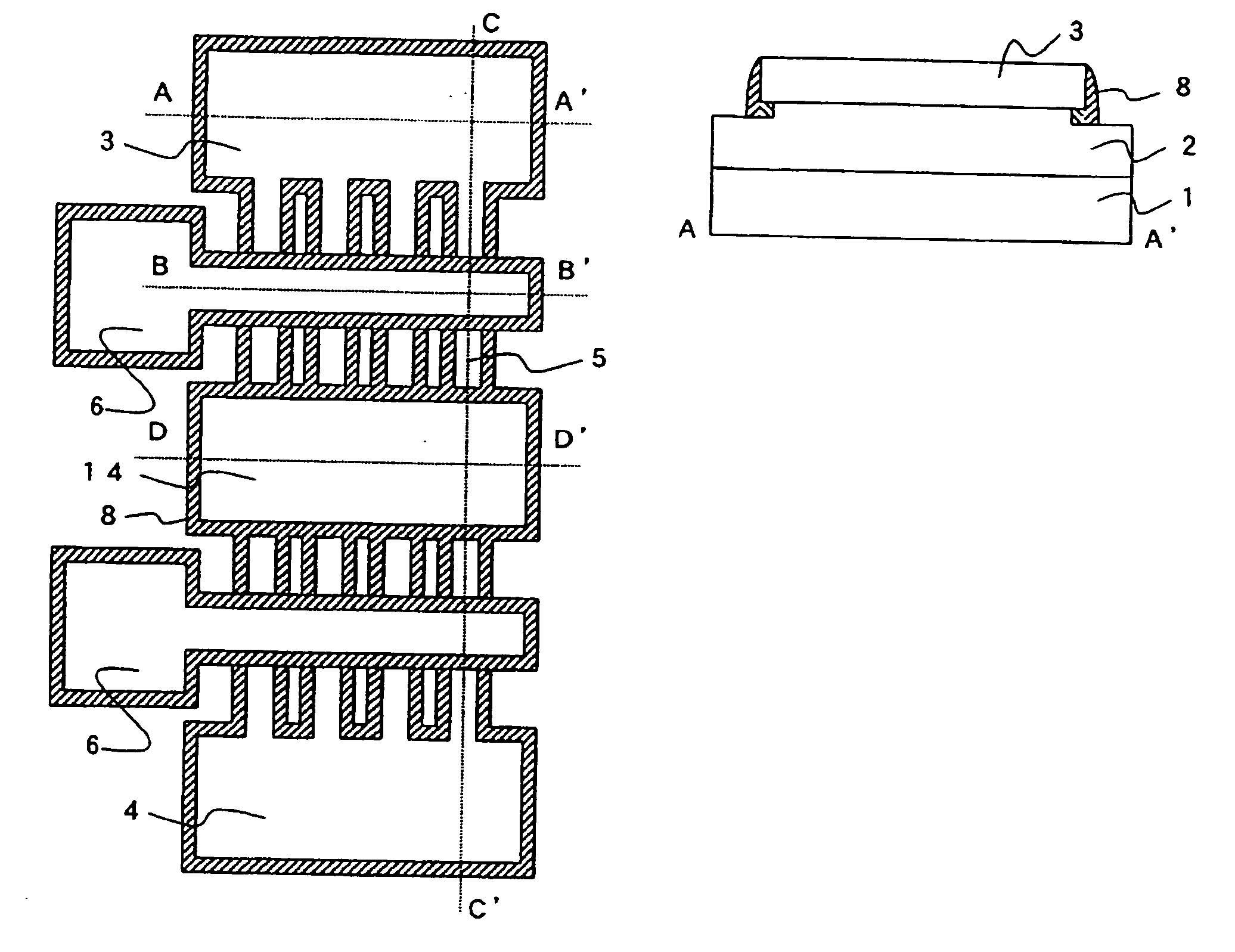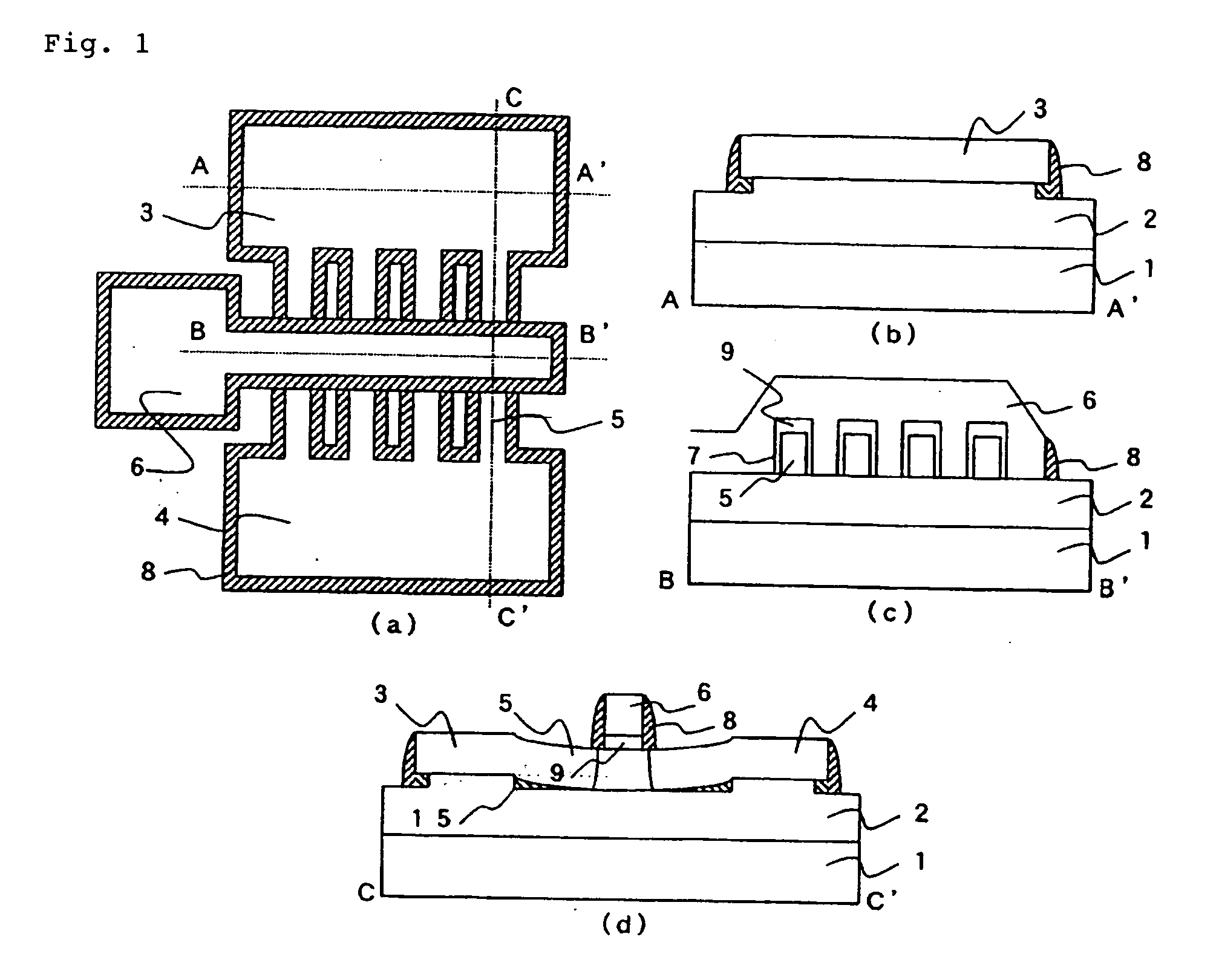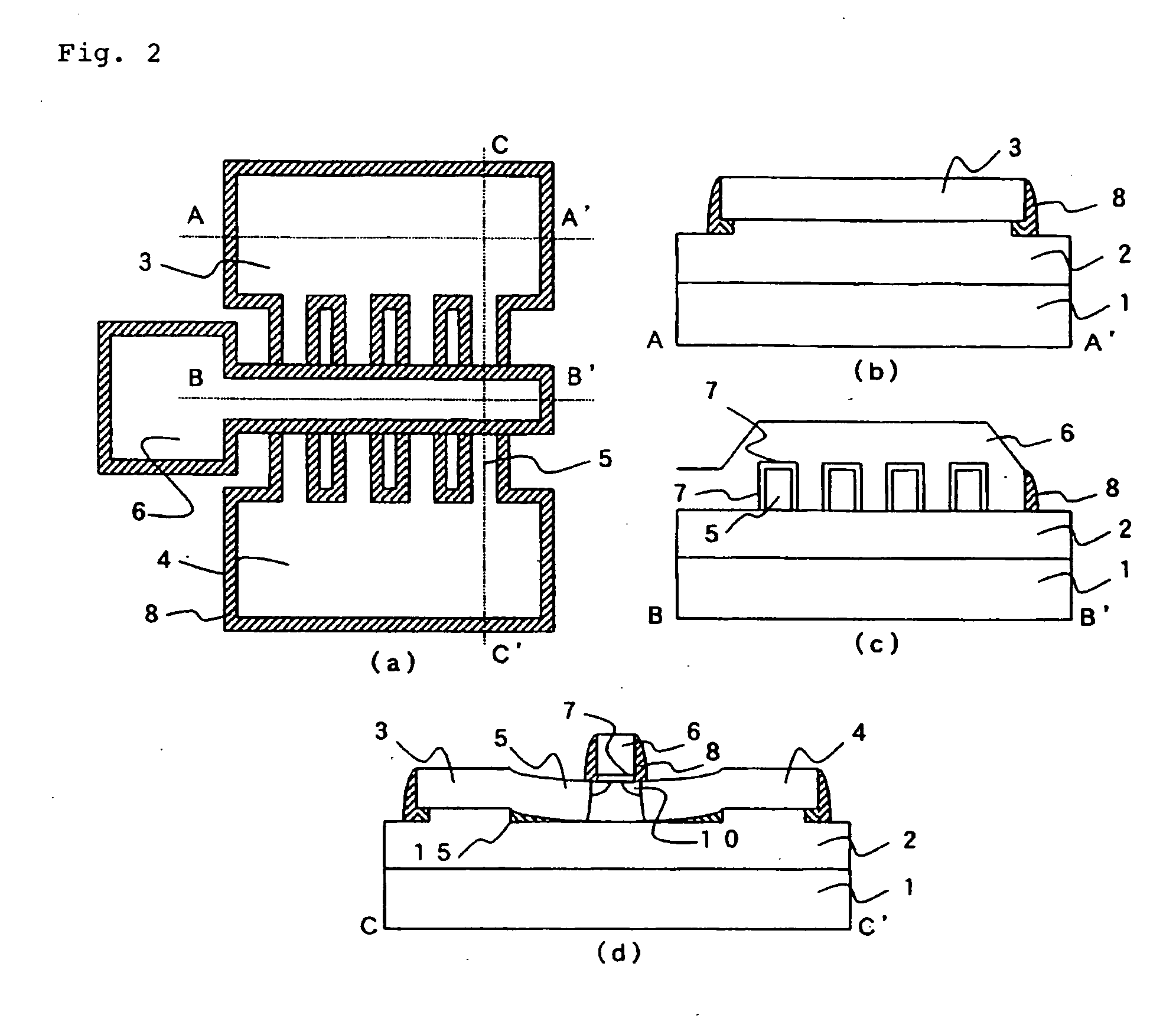Semiconductor Device and Manufacturing Process Therefor
a technology of semiconductors and semiconductors, applied in the direction of semiconductor devices, electrical devices, transistors, etc., can solve the problems of difficult operation of integrated circuits, ingenious dislocations and defects in channel si layers, and significantly difficult to reduce the size of integrated circuits, etc., to achieve less dislocations or defects, improve carrier mobility, and control the effect of strain
- Summary
- Abstract
- Description
- Claims
- Application Information
AI Technical Summary
Benefits of technology
Problems solved by technology
Method used
Image
Examples
embodiment 1
Modification of Embodiment 1
[0113] In the process of the present invention, different strain can be applied to each FinFET constituting an integrated circuit. For example, when a certain FinFET is to be used as a conventional FinFET without strain, the FinFET can be masked after the process of FIG. 3, not to be etched during the buried oxide film etching in FIG. 4. Since the strain amount can be controlled by L and d as described above, under a constant d condition, strain can be controlled by altering L for each FinFET. Under a constant L condition, the amount of buried oxide film etching d is altered for each FinFET. That is, buried oxide film etching is conducted more than once appropriately in combination with masking of a FinFET, to apply different strain to each FinFET. These methods can be combined.
[0114] For example, a triple gate type FinFET is layouted such that the Fin in parallel to the X-axis using a (100) SOI wafer and keeping a notch down. Here, the upper surface of...
embodiment 2
[0116] There will be described Embodiment 2 of the present invention with reference to the drawings.
[0117]FIGS. 11 and 12 schematically show Embodiment 2 of a semiconductor device of the present invention. FIG. 11(a) is a top view, and FIGS. 11(b), (c) and (d) are cross-sectional views taken on lines A-A′, B-B′ and C-C′ of FIG. 11(a), respectively. FIG. 12(a) is a top view, and FIGS. 12(b), (c) and (d) are cross-sectional views taken on lines A-A′, B-B′ and C-C′ of FIG. 12(a). FIG. 11 shows a double-gate type FinFET before forming a silicide. FIG. 12 shows a triple gate type FinFET before forming a silicide.
[0118] Embodiment 2 employs a manufacturing process different from that in Embodiment 1, in which steps are reduced. Reflecting the difference, the structures are partly different. Specific differences are a shape of the gate electrode 6 and an insulating film under the fin 5. The gate electrode 6 in Embodiment 2 has a so-called notch type gate shape where a region in contact w...
embodiment 3
[0130] Next, there will be described Embodiment 3 of the present invention with reference to the drawings.
[0131]FIGS. 16 and 17 schematically show Embodiment 3 of a semiconductor device of the present invention. FIG. 16(a) is a top view, and FIGS. 16(b), (c) and (d) are cross-sectional views taken on lines A-A′, B-B′ and C-C′ of FIG. 16(a), respectively. FIG. 17(a) is a top view, and FIGS. 17(b), (c) and (d) are cross-sectional views taken on lines A-A′, B-B′ and C-C′ of FIG. 17(a). FIG. 16 shows a double-gate type FinFET before forming a silicide. FIG. 17 shows a triple gate type FinFET before forming a silicide.
[0132] Embodiment 3 of the present invention is different from Embodiment 1 in a method for forming a pad of the source electrode 3 and a pad of the drain electrode 4. Reflecting the difference, the structures are partly different. A structural difference is that the pad of the source electrode 3 and the pad of the drain electrode 4 are elevated. The structure of the othe...
PUM
 Login to View More
Login to View More Abstract
Description
Claims
Application Information
 Login to View More
Login to View More - R&D
- Intellectual Property
- Life Sciences
- Materials
- Tech Scout
- Unparalleled Data Quality
- Higher Quality Content
- 60% Fewer Hallucinations
Browse by: Latest US Patents, China's latest patents, Technical Efficacy Thesaurus, Application Domain, Technology Topic, Popular Technical Reports.
© 2025 PatSnap. All rights reserved.Legal|Privacy policy|Modern Slavery Act Transparency Statement|Sitemap|About US| Contact US: help@patsnap.com



